Idea by
FAAB Architektura
Sciene Now (http://sciencenow.studio/en)
Call for ideas 2020
Poland 2118 Project
Poland 2118 Project
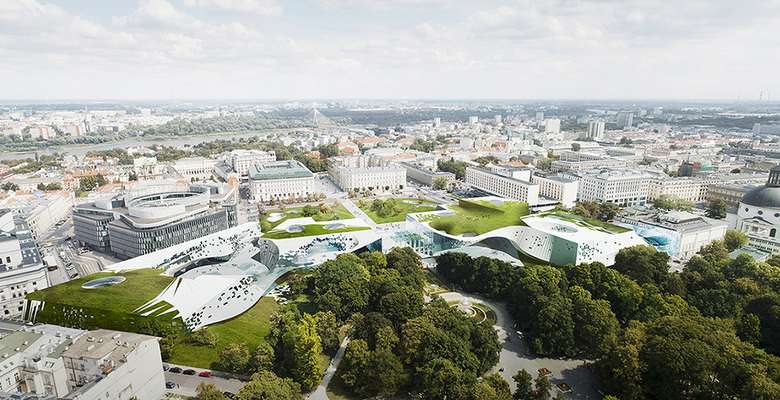
- Systemic changes
The investment promotes the creation of urban ecosystems, where buildings integrated with their surroundings and the city contribute to raising the living standards of all inhabitants. It envisages organising Europe’s largest cycle park, it reduces the urban heat island effect, and assumes harvesting of all rainwater, with no need to connect the development to the municipal storm water drainage system. The proposed Urban Spa is also to be an exceptional space. Everyone will be able to breathe air free from high concentrations of particulate matter and nitrogen oxides, and also to take advantage of aromatherapies and heliotherapies, interacting with outdoor exhibitions organised at the Capital Terrace of Art and Recreation. Narrowed roadways with reduced radius cornering will bring about a real reduction in vehicle speeds to 30 km/h, optimal for reducing transport noise. The totality of planned activities will impact significantly on improving the acoustic “climate” of place.
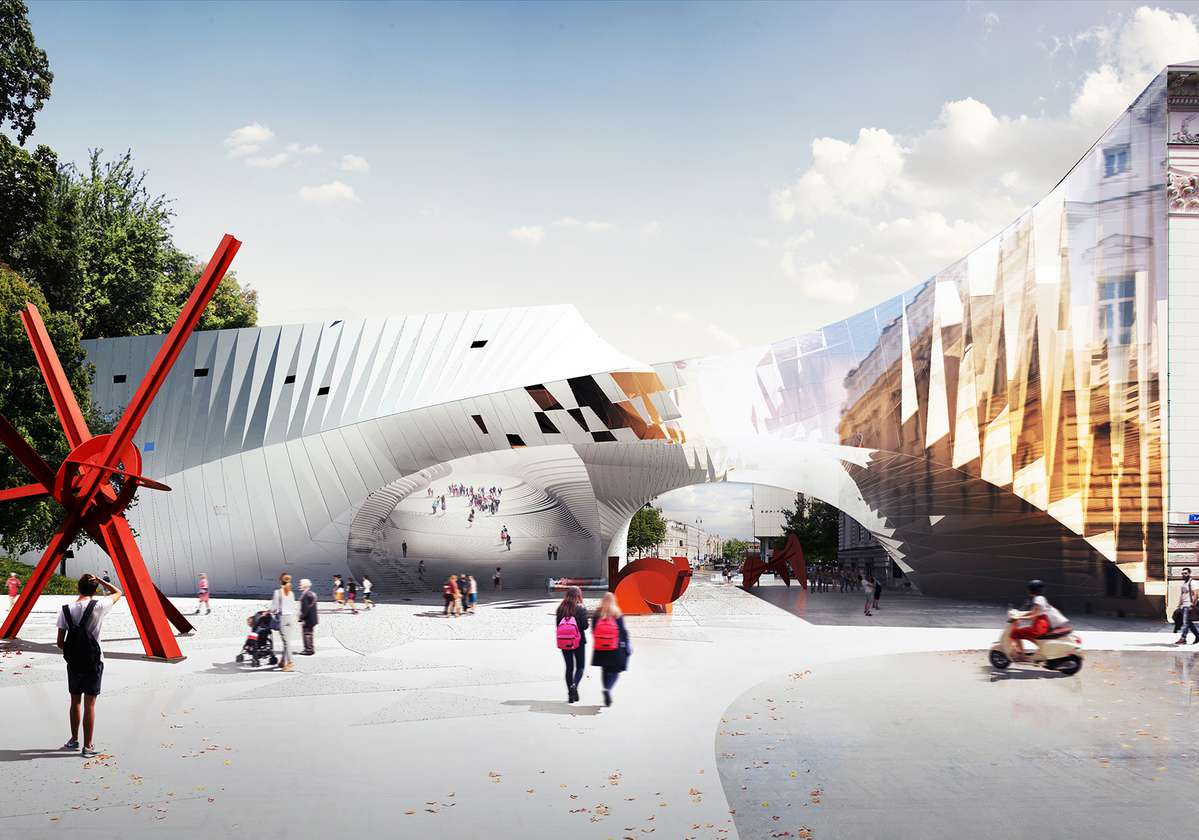
A generally accessible space situated between the existing Zacheta-National Gallery of Art building and the New Zacheta (the New Zacheta in accordance with a world trend for expansion of the most important contemporary art galleries), the Art Plaza will be an outdoor exhibition space. Exhibits will be placed on the Plaza itself, but also with opportunities for art works to be suspended from above.
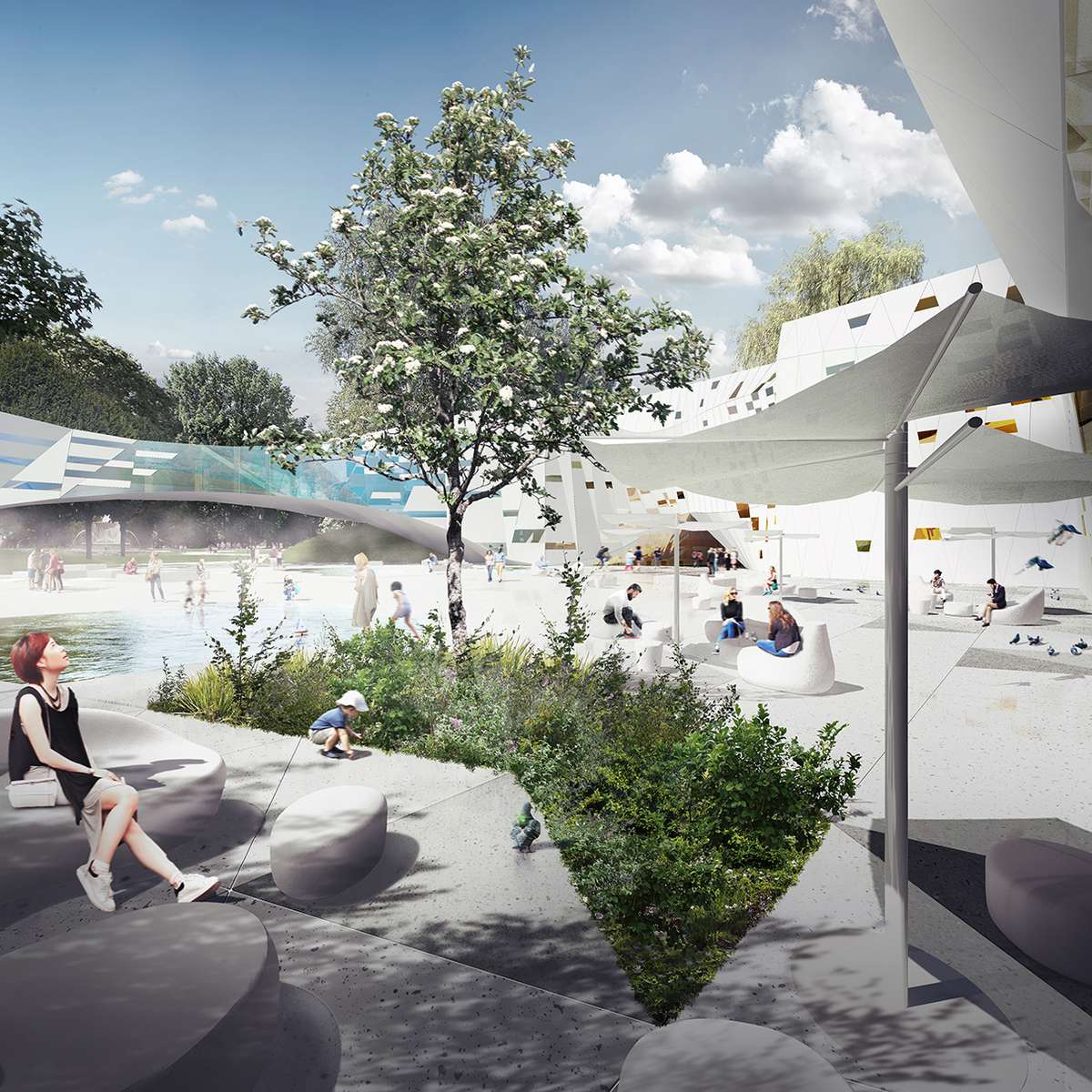
An area created within the outline of the former courtyard of the Brühl Palace, where the entire infrastructure will focus on creating a cool asylum accessible to all in the summer months. Water reservoirs and “wet floor” type fountains will cool the air. So-called “dry fog” generators will help to achieve the goal of reducing the air temperature by 6-8 ˚C.
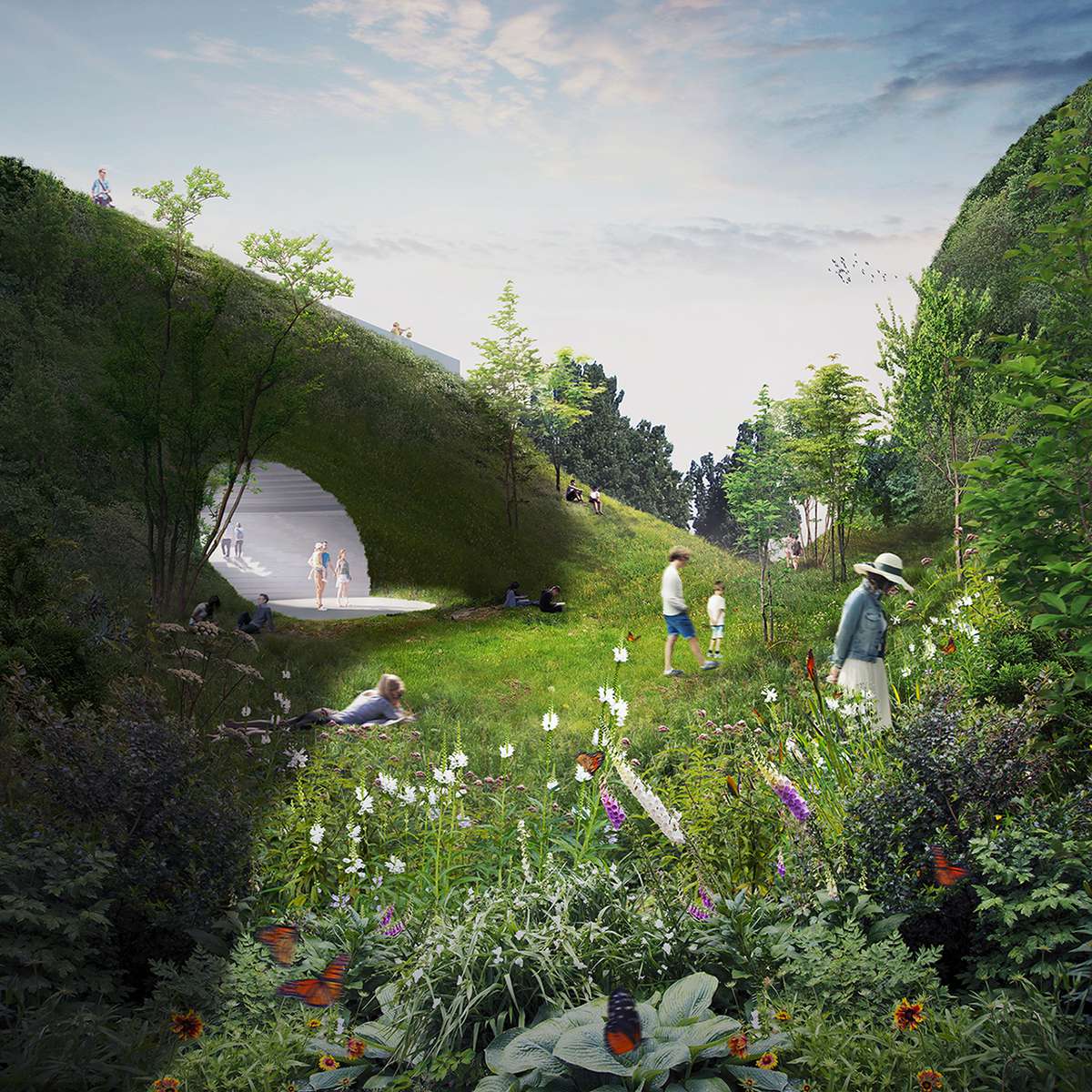
This is a fragment of the complex where the roof of the building forms a depression, resembling a small ravine. Specially selected plants, supported by natural air filters based on mosses and algae, will create a healthy microclimate. The interaction of flora and technology provides air purified from particulate matter, nitrogen oxides and other substances. The main component of the Urban Spa, namely the Biological Air Purifier, is a continuation and development of the Oxygenator idea.
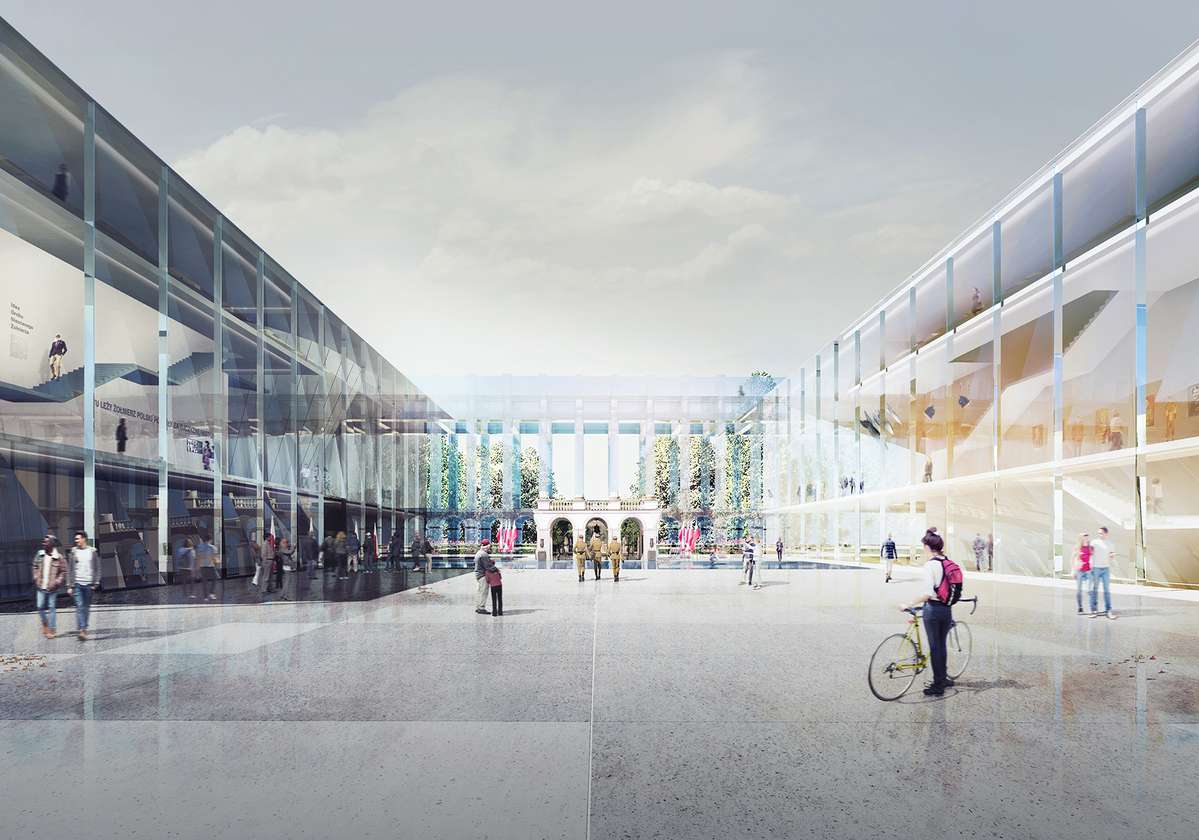
An institution intended to revive one of the absolutely most important places for Polish memory and to make it more readily comprehensible not only to foreign visitors, but also for Poles. The Tomb is presently identified as a monument, but thanks to the proposed museum its function might be expanded to being a carrier of knowledge about the historic events which are referenced on its memorial tablets.

The sporadically used Pilsudski Square will be turned into Pilsudski Park, offering a place to rest for everyone. Replacing the stone pavement with greenery will reduce the urban heat island syndrome. The natural greenery on the walls and roofs as well as the terrain blurs the boundaries between the buildings and the park. The building generates electricity using photovoltaic cells and technologically advanced pavements.
Poland 2118 Project
Poland 2118 Project

- Systemic changes
The investment promotes the creation of urban ecosystems, where buildings integrated with their surroundings and the city contribute to raising the living standards of all inhabitants. It envisages organising Europe’s largest cycle park, it reduces the urban heat island effect, and assumes harvesting of all rainwater, with no need to connect the development to the municipal storm water drainage system. The proposed Urban Spa is also to be an exceptional space. Everyone will be able to breathe air free from high concentrations of particulate matter and nitrogen oxides, and also to take advantage of aromatherapies and heliotherapies, interacting with outdoor exhibitions organised at the Capital Terrace of Art and Recreation. Narrowed roadways with reduced radius cornering will bring about a real reduction in vehicle speeds to 30 km/h, optimal for reducing transport noise. The totality of planned activities will impact significantly on improving the acoustic “climate” of place.
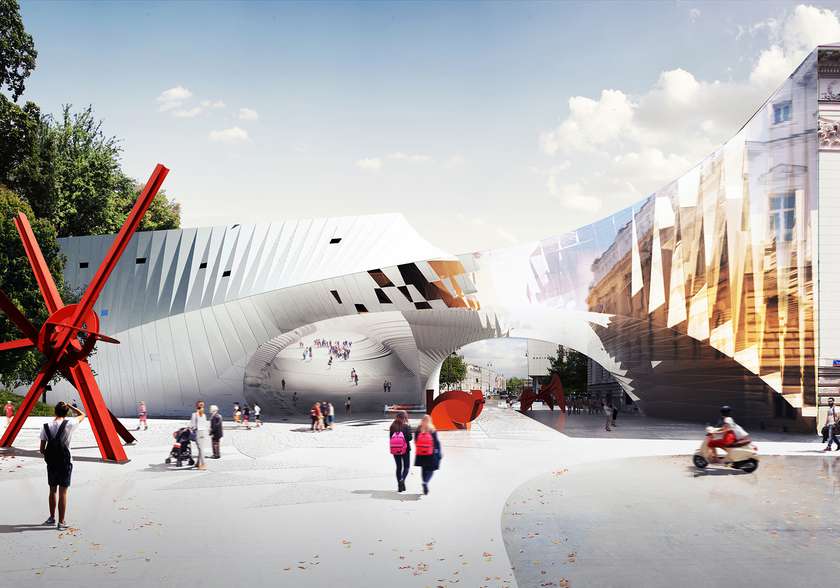
A generally accessible space situated between the existing Zacheta-National Gallery of Art building and the New Zacheta (the New Zacheta in accordance with a world trend for expansion of the most important contemporary art galleries), the Art Plaza will be an outdoor exhibition space. Exhibits will be placed on the Plaza itself, but also with opportunities for art works to be suspended from above.
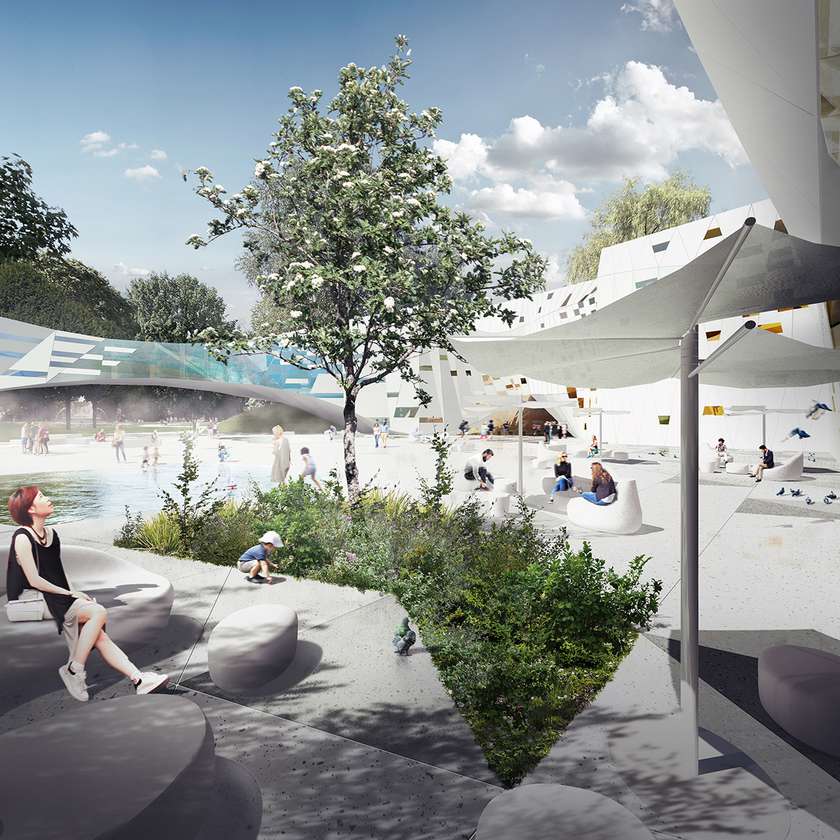
An area created within the outline of the former courtyard of the Brühl Palace, where the entire infrastructure will focus on creating a cool asylum accessible to all in the summer months. Water reservoirs and “wet floor” type fountains will cool the air. So-called “dry fog” generators will help to achieve the goal of reducing the air temperature by 6-8 ˚C.
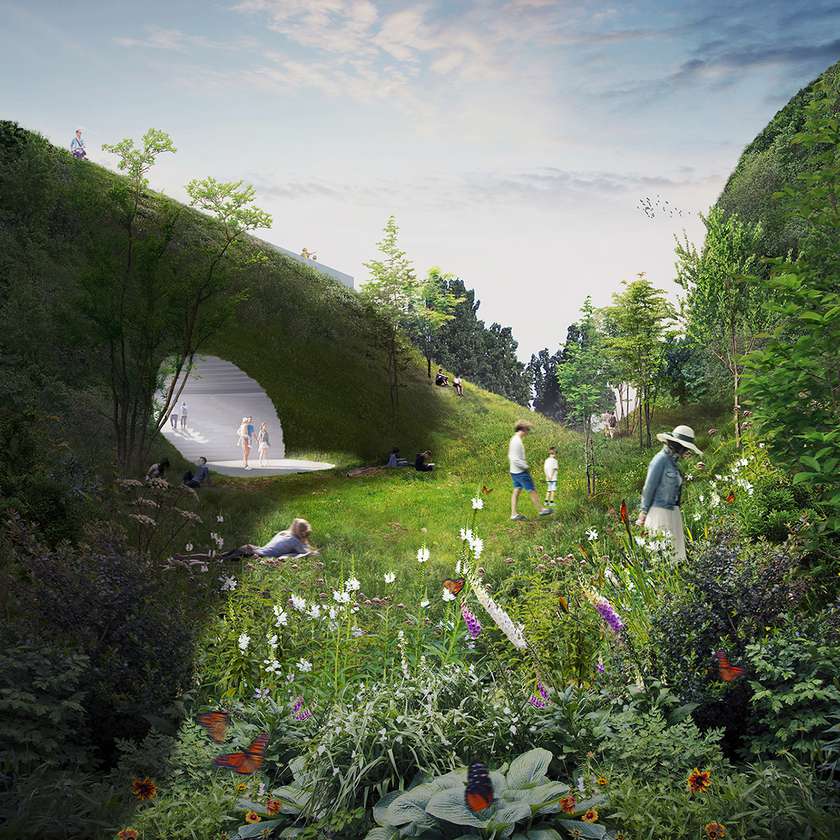
This is a fragment of the complex where the roof of the building forms a depression, resembling a small ravine. Specially selected plants, supported by natural air filters based on mosses and algae, will create a healthy microclimate. The interaction of flora and technology provides air purified from particulate matter, nitrogen oxides and other substances. The main component of the Urban Spa, namely the Biological Air Purifier, is a continuation and development of the Oxygenator idea.
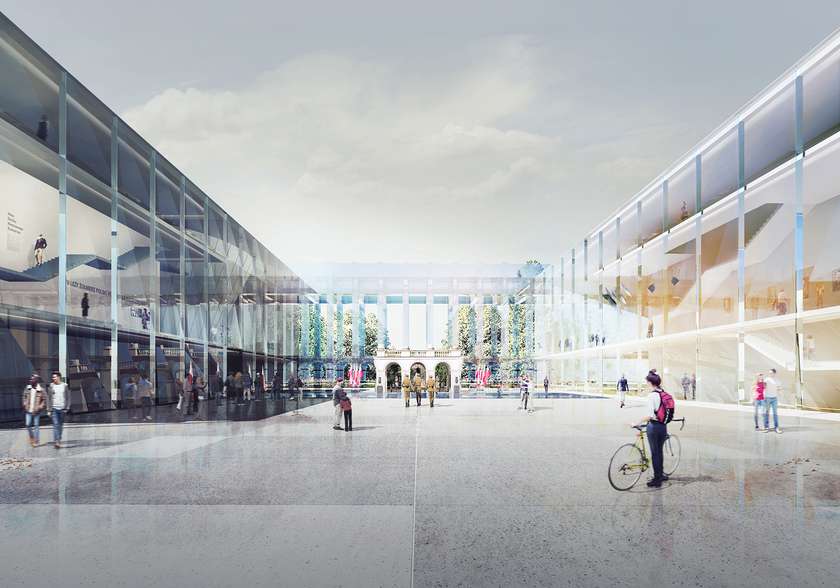
An institution intended to revive one of the absolutely most important places for Polish memory and to make it more readily comprehensible not only to foreign visitors, but also for Poles. The Tomb is presently identified as a monument, but thanks to the proposed museum its function might be expanded to being a carrier of knowledge about the historic events which are referenced on its memorial tablets.
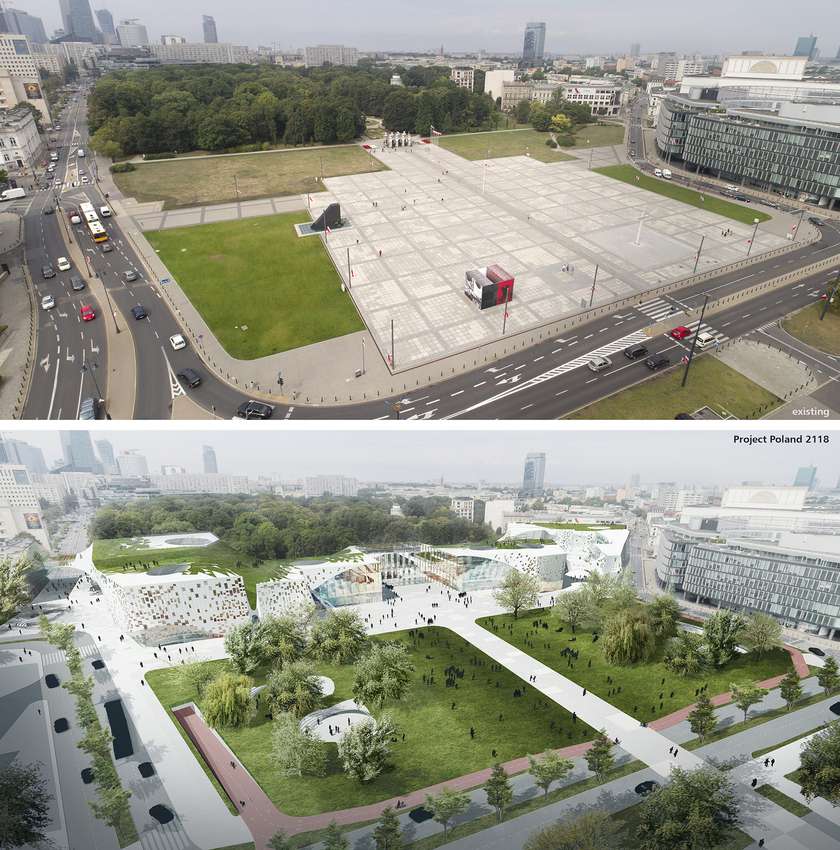
The sporadically used Pilsudski Square will be turned into Pilsudski Park, offering a place to rest for everyone. Replacing the stone pavement with greenery will reduce the urban heat island syndrome. The natural greenery on the walls and roofs as well as the terrain blurs the boundaries between the buildings and the park. The building generates electricity using photovoltaic cells and technologically advanced pavements.